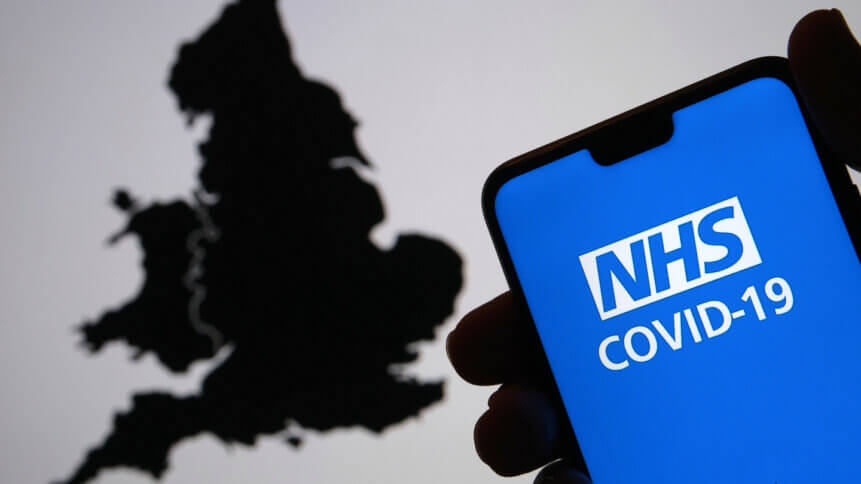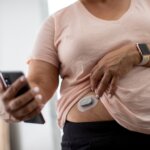Better healthcare outcomes through digital connectivity

We live in an increasingly fast-paced, occasionally overwhelming world – and that can be especially true in healthcare. Certainly the paradigm of ten years ago in healthcare around the world is not what it is today. The combination of the Covid-19 pandemic, a meteoric rise in technologically-connected remote patient monitoring and at-home self-care, and the new dimension of AI and machine learning in the healthcare field means trips to your doctor are likely to be less and less frequent, and your practitioners are far more likely to monitor your healthcare outcomes through digital connectivity.
We spoke to Jack Dix of Kainos, a company at the forefront of digital connectivity in healthcare in the UK, to explore the benefits of this new medical paradigm – and where it may be heading in the future.
THQ:
You have what it’s safe to say is some “previous form” on delivering digital connectivity in the healthcare field with an impact on outcomes, don’t you?
The Covid people.
JD:
It’s fair to say that, yes. I’ve worked a lot with NHS Digital over the last few years, but probably the biggest of the roles that I’ve taken on personally was leading the delivery of the digital elements for the COVID-19 testing service at the height of the pandemic.
THQ:
Low-stress, chilled-out work, then?
JD:
Really challenging, but also very rewarding work. When I say the digital elements of the Covid-19 testing service, I mean we created services that enabled key worker testing, home test ordering and community testing all – while understanding of the virus was still developing.
THQ:
A kind of triage environment of pressure, in the full glare of national and international scrutiny.
JD:
Yeah, exactly. What a piece of work to be involved with. And the point is that what we do at Kainos now, in terms of hopefully delivering better healthcare outcomes through digital connectivity, is a question of scaling the kind of things that we did – and the lessons we learned – in trying to help support the response to the pandemic.
For instance, NHS England, through NHS Digital, we built out a lot of the underpinning services and applications that supported COVID-19 testing. We also built the contact tracing advisory service for UKHSA (the UK Health Security Agency).
The Test and Trace project, we had to deliver that at breakneck speed, and get it right, simultaneously.
For the Contact Tracing Advisory Service, we had to support the proof of concept of the pilot in the Isle of Wight within six days to be able to get the application migrated to the cloud.
Areas of change.
JD:
And then in Northern Ireland, we supported HSC (Health and Social Care) to build their contact tracing platform, and their vaccination management system. And subsequently, we’ve done a lot of work extending that into the development of their national health analytics platform. So we’ve got experience with some really exciting work in delivering better healthcare outcomes through digital connectivity with large population scale secure digital services.
THQ:
Are there areas of major change within the NHS that you feel you could still help with? And is there any kind of pecking order to those? Is there something that you look at and go, “Oh, we could do this or that to help bring the NHS into the 21st century”?
JD:
Well, yes. Our experience during the pandemic showed us that there’s a huge opportunity for digital transformation in healthcare. Previously, there was a belief that being able to deliver digital change on any sort of scale very quickly was almost impossible within the healthcare system, given some of the previous challenges and false starts.
So having broken that myth is hugely encouraging. Our experiences showed us that digital services are actually critical if you want to be able to improve patient outcomes, and I think that post-pandemic, it’s increasingly accepted that digital and data services are probably among the main levers that you have that can deliver you faster and more effective and more personalized healthcare.
The digital connectivity issue.
In terms of specific areas where we think that we can have an impact, where we see real challenges, one is probably around the accessibility of healthcare services and digital connectivity.
Now more than ever before, there’s an opportunity to provide easier access to healthcare services through different digital channels. And we’ve been heavily involved in this space, through our work with the NHS app.
The app has over 30 million users now. Admittedly, a lot of that uptake was initially driven through features like COVID paths that were integrated into the app, but that gives us the platform to be able to more effectively deliver what’s been called a digital front door for healthcare services.
For the NHS app, we started working with NHS Digital back in 2017. There was a government commitment to create a population-scale digital service that would connect existing healthcare services. The objective was really to kind of raise the floor on the provision of digital healthcare. But there were lots of challenges to doing that.
There were lots of existing digital services already in place, but no real standards associated with those inconsistencies in quality. And some of them were only available in certain regions or for certain certain cohorts of patients. So you might have used services local to you. But myself in a different regional part of the UK simply wouldn’t have known they were available and wouldn’t have access to them, because they were regionally commissioned in a lot of instances, regionally supported and originally funded with licensing costs.
Unpicking the patchwork.
THQ:
A digital postcode lottery of healthcare, in fact? Where you lived determined what was available?
JD:
Exactly. So patients didn’t really know what services were available to them, even if they were there. And sometimes those services weren’t very patient-centric.
Historically, most of this transformation in healthcare is focused on clinical-facing systems for valid reasons, and how we can help healthcare professionals and clinicians to improve the services they deliver to patients.
A lot of patient-facing digital services were really just bolted on whenever localized budgets became available and particular services were prioritized.
When you try to knit this complex picture together and form a common national application for the NHS, that localized, budget-driven, locally-prioritized approach causes a lot of problems that you have to do away with before you can begin to build and raise the floor on better healthcare outcomes through digital connectivity.
We had to integrate lots of systems, we had to integrate with all four GP (General Practitioner) supply systems, which hadn’t been done before. And that in turn brought a lot of challenges around the consistency of data.
Until we’d sorted out the patchwork system of the past and achieved a level of consistency across the country, we couldn’t begin to build reliable digital connectivity in a way that people would buy into, especially when it was something largely different from their whole prior experience of healthcare.
And then…
THQ:
Because the previous system was very face-to-face appointment-driven, wasn’t it? Nobody before 2017 in the UK would ever have had an accident, an injury, a rash or a wart and thought “I wonder what the app says I should do?” They’d have followed a process that dated back to the 1940s – contact their doctor, arrange a face-to-face visit, even though there may have been some digital provision.
JD:
Exactly. Because the system was patchwork, the general public often did not see that digital connectivity could be the best way to get their issue seen to, without necessarily burdening an increasingly strained health service. That was the reason that our work to establish coherence and consistency across the board was imperative for whatever was to come next. The digital connectivity had to be available widely across the board, so at the very least, you could advertise it as being available with that consistency. That’s how you get something into the minds of a population – make it available everywhere, and make it consistent everywhere.
THQ:
Annnnd then Covid happened…
In Part 2 of this article, we’ll dive deeper into the transformation of UK healthcare provision throughout the pandemic and the post-pandemic period, exploring the potential uptick in healthcare outcomes through digital connectivity.










